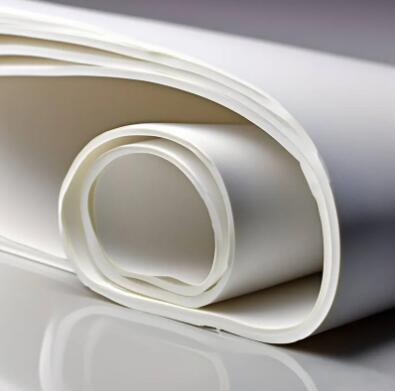Understanding the NR Rubber Compound Manufacturing Process: From Raw Materials to Vulcanization
2024-09-09
Natural rubber (NR) has long been an essential material used in manufacturing due to its versatility and durability. To achieve the desired properties for specific applications, NR rubber is often combined with other materials through a process known as compounding. This process involves the precise blending of raw materials followed by shaping, curing, and finishing steps.
In this blog, we'll provide a detailed look at the raw materials involved in the NR rubber compound production and the techniques used to manufacture high-quality rubber products.
1. The Role of Raw Materials in NR Rubber Compounds
The raw materials used in NR rubber compounding are crucial to determining the physical and chemical properties of the final product. These materials can be categorized into several key components:
- Natural Rubber (NR): The main ingredient in NR rubber compounds, derived from rubber tree latex. NR provides excellent elasticity, tensile strength, and abrasion resistance.
- Reinforcing Fillers: Fillers such as carbon black or silica are added to improve the mechanical strength and durability of the rubber compound. Carbon black, in particular, is widely used to enhance wear resistance in tire compounds.
- Softening Agents: Oils, esters, or waxes are added to adjust the flexibility of the rubber, making it easier to process and mold into desired shapes. These agents also help reduce internal friction during use, improving product lifespan.
- Vulcanization Agents: Vulcanization involves adding sulfur or other chemicals that enable the rubber to form cross-links between polymer chains during heating. This process greatly improves the elasticity, heat resistance, and mechanical strength of the compound.
- Accelerators: Compounding accelerators, such as thiazoles or sulfenamides, are added to speed up the vulcanization process, allowing for faster and more controlled curing.
- Protective Additives: Antioxidants, UV stabilizers, and anti-ozonants protect the rubber compound from environmental factors like oxidation, sunlight, and ozone, which can degrade the rubber over time.
2. Production Techniques in NR Rubber Compounding
a. Rubber Mixing
The first major step in manufacturing an NR rubber compound is the mixing of natural rubber with other additives. This process is carried out using two key types of mixing equipment:
- Banbury Mixers: These internal mixers consist of two rotating rotors that shear and blend the rubber with fillers and other chemicals. Banbury mixers are highly effective at dispersing additives uniformly throughout the compound.
- Two-Roll Mills: After initial mixing, the compound is passed through two-roll mills, which further refine the material, adjusting its consistency and thickness.
b. Shaping the Rubber
Once the mixing process is complete, the compound is ready for shaping. The most common methods used to shape rubber include:
- Extrusion: The rubber compound is forced through a die to form continuous shapes like tubing or profiles, often used in sealing applications.
- Calendaring: For products that require thin sheets or films, the rubber compound is passed between rollers to create consistent thickness.
c. Vulcanization Process
Vulcanization is the transformative stage that gives rubber its final set of properties. During this process, the compound is subjected to controlled heat and pressure, causing the sulfur to form cross-links between the rubber's polymer chains. This step increases the elasticity, strength, and heat resistance of the rubber.
Depending on the product, vulcanization can be done using various methods:
- Compression Molding: For solid parts, the compound is placed in a mold and heated under pressure.
- Continuous Vulcanization: For continuous products like hoses or cables, the rubber is passed through a vulcanizing oven.
d. Post-Processing and Quality Control
Once the rubber has been vulcanized, additional post-processing steps may be performed to enhance its surface or finish. These include:
- Trimming: Removing excess material from molded parts.
- Surface Treatment: Applying coatings to enhance the rubber’s appearance or functionality.
Lastly, quality control testing ensures that the compound meets all specifications, such as tensile strength, elasticity, and resistance to environmental factors like heat and chemicals.
3. Challenges in NR Rubber Compound Manufacturing
While the process of producing NR rubber compounds is well-established, manufacturers face challenges in ensuring consistent quality. Controlling variables like mixing time, temperature, and the precise amount of each additive is critical for producing high-performance rubber products.
Conclusion
Manufacturing NR rubber compounds requires a deep understanding of both the raw materials used and the techniques employed. From mixing and shaping to vulcanization, each step plays a critical role in determining the properties of the final product. By mastering these processes, manufacturers can produce high-performance rubber products tailored to specific industrial applications.



